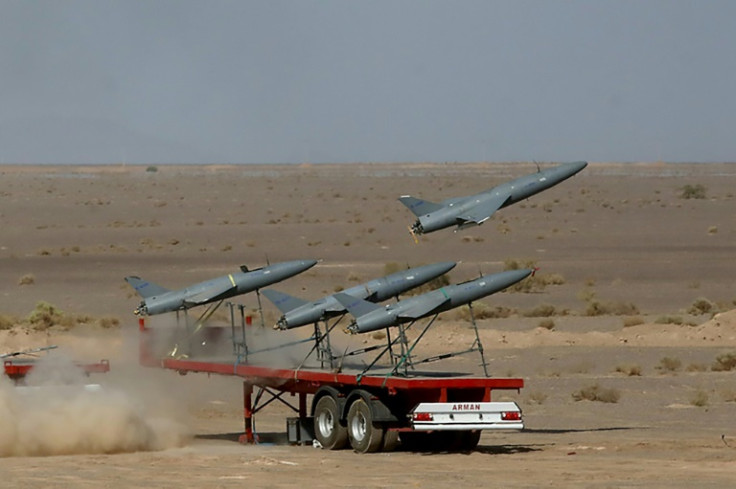Ukraine Intelligence Finds American Parts Used In Iranian Drones: Report
KEY POINTS
- The investigation included a Mohajer-6 drone that was hacked mid-flight and landed intact
- Many of the parts used for the manufacturing of these drones aren't under export controls
- Iran may also be using Chinese knock-offs of Western parts for the manufacture of drones
Despite a comprehensive effort by Western allies to sanction and block Tehran from sending drones and missiles to Moscow for the war in Ukraine, a media report based on Ukrainian intelligence findings says most of the parts used in the Iranian drones originated from companies in the U.S. and other allied nations.
According to a report by The Wall Street Journal (WSJ) which reviewed the documents, Ukrainian intelligence found that most of the components used to manufacture the Iranian drones were American in origin.
These findings were reportedly based on an investigation of several Iranian drones downed by the Ukrainian military. According to the outlet, the investigation included a Mohajer-6 drone that agents hacked mid-flight and managed to land it intact.
Roughly half of over 200 technical components of the captured drone were made by firms based in the U.S., as per the report, while nearly a third of the components were of Japanese origin, including the drone's servomotors.
The report further revealed that a host of electronic components came from German companies, while the drone's high-resolution telescopic infrared lens which is used for surveillance and targeting appeared identical to a model manufactured by an Israeli firm.
Based on the findings, the Bureau of Industry and Security, which is responsible for enforcing export controls under the U.S. Department of Commerce, has reportedly launched an investigation into the Western-origin parts used in Iranian drones.
According to the WSJ, the findings by the Ukrainian military intelligence were also verified by the Independent Anti-Corruption Commission, or NAKO, a Kyiv-based nonprofit with expertise in assessing military contracts and arms.
Citing security officials, the outlet added that many of the parts used in the drones aren't under export controls, which means they can be easily purchased online and shipped to Iran through other countries. Although such transshipment violates the law, it is difficult to prevent.
An October report by the Washington-based think tank Institute for Science and International Security, based on open-source information, said the captured Iranian drones contained parts and accessories that were designed or produced by Western companies in Austria, Germany, the United Kingdom, and the United States.
There are also reports that suggest that Iran may be using Chinese knock-offs of Western parts for the manufacture of drones.
Following the successful counter-offensive by Ukrainian forces, and faced with the challenge of depleting military resources, Russia has begun using a variety of cheaper Iranian-made drones to carry out a barrage of attacks on critical civilian infrastructure in Ukraine.
Moscow deployed Shahed-136 drones, also referred to as kamikaze drones and Mohajer-6 with reports saying they were repainted and given Russian names to hide their origin and identity.
Moreover, Iran is also preparing to send surface-to-surface ballistic missiles to Russia as part of a tranche of roughly 1,000 additional weapons to be sent by the end of this year.

© Copyright IBTimes 2024. All rights reserved.






















